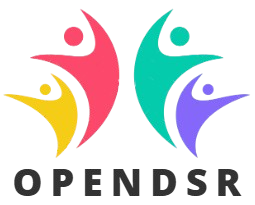Employee experience often fails because it lacks ownership and accountability. Everyone agrees it matters, but no one owns the process end-to-end. OPENDSR solves this by keeping governance simple, clear, and action-oriented.
1. Clear Roles & OwnershipGovernance in OPENDSR is distributed but structured:
-
Experience Stewards
Usually HR leaders or EX-focused teams. Their role is to observe and prioritize employee experiences, ensuring feedback loops are active. -
Design Champions
Managers or team leads who apply design standards consistently in their daily practices (onboarding, recognition, team rituals). -
Data Partners
Analysts or IT support who ensure that real-time intelligence (pulse surveys, usage analytics, sentiment signals) is collected, interpreted, and shared responsibly. -
Leadership Sponsors
Senior executives who champion EX as a business priority, ensuring visibility and accountability at the highest level.
This way, accountability is shared but structured, avoiding the “EX belongs to HR only” trap.
2. Regular Reviews & RhythmGovernance doesn’t need to mean endless meetings. OPENDSR advocates for quarterly reviews, where teams ask simple but powerful questions:
-
What did we observe this quarter?
-
What improvements were made?
-
Where do friction points remain?
-
What should we refine next?
Example: In Q1, an IT company prioritized reducing onboarding confusion. By Q2, 80% of new hires rated the process “clear.” At the review, attention shifts to recognition practices.
This rhythm ensures EX evolves in small, manageable steps rather than getting stuck in large, abstract initiatives.
3. Focused MetricsOPENDSR avoids vanity metrics like “survey completion rate.” Instead, it focuses on human-centered, outcome-driven measures:
-
Sentiment Health → How do employees feel about their work? (pulse survey scores, mood indicators).
-
Friction Points → What are the recurring pain points? (support tickets, feedback themes).
-
Resolution Speed → How quickly are issues addressed once identified?
-
Consistency Index → Are design standards being applied across departments fairly?
These metrics are simple enough to act on, yet powerful enough to drive leadership decisions.
4. Transparency & CommunicationGovernance works only if employees see and believe the system is real. OPENDSR emphasizes radical transparency:
-
Sharing quarterly “You Said, We Did” reports with employees.
-
Communicating changes openly, even small ones.
-
Acknowledging friction honestly rather than hiding it.
Example: After a pulse survey flagged unclear career paths, leadership shared a message: “We heard you. Over the next 3 months, we will pilot a transparent promotion framework. We’ll share updates as we go.” This visibility builds credibility.
Governance in Practice: A Simple Model-
Roles Defined → Everyone knows their part (Stewards, Champions, Data Partners, Sponsors).
-
Quarterly Reviews → Simple reflection rhythm.
-
Focused Metrics → Sentiment, friction, resolution, consistency.
-
Transparent Communication → Employees see feedback leading to action.
In summary, OPENDSR governance ensures the framework doesn’t gather dust. It keeps EX alive, accountable, and trusted, without drowning teams in bureaucracy.
Go to Home






